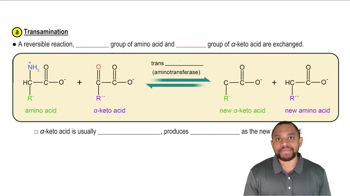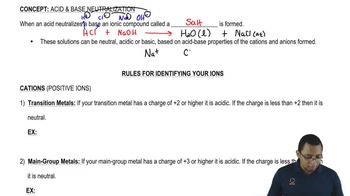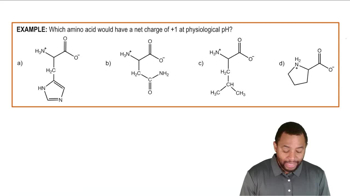Indicate the changes in secondary and tertiary structural levels of proteins for each of the following:
c. To avoid spoilage, seeds are treated with a solution of HgCl2.
 Verified step by step guidance
Verified step by step guidance Verified video answer for a similar problem:
Verified video answer for a similar problem:



 2:56m
2:56mMaster Summary of Protein Structure Concept 1 with a bite sized video explanation from Jules
Start learning